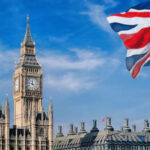The Philippines is ready to welcome foreign tourists once again. The country had to tighten COVID-19 mandates over the past few months, hoping to stem the tide of a resurgent virus, and it did. The convergence of the Omicron and Delta COVID-19 variants forced the country to seek a more drastic measure in reigning in the infection.
Glimmer of Hope for International Travels
Now, almost a year after international travelers were banned from visiting the country, the Philippines is opening up again. Details were released on Friday by a spokesperson for the Presidential Palace, allowing anyone with a valid visa to enter the country from Thursday, February 10 onward. However, some countries have been cleared and will arrive without visas. Those include visitors from Singapore, the United States, and the United Kingdom, Germany, South Korea, Australia, Japan, Singapore, and Malaysia.
However, any arrivals will have to comply with strict medical protocols, including a PCR test conducted 48 hours of departure at the latest and a fully vaccinated status. This may or may not include booster shots, depending on national regulatory frameworks. Similar to other countries, the Philippines also asks travelers to have travel insurance worth at least $35,000, and they would also have to show a return ticket. The insurance would have to cover their entire stay in the country.
There would be no need to undergo quarantine unless a traveler suspects that they might be positive and a test reveals as much. Overall, the country is optimistic about the months ahead, hoping to restore international traffic after a year-long hiatus. The gambling and tourist industries in the country have been intertwined despite some setbacks.
Tourism and Gambling Assist the Economy
Casino operators stepped up their game and helped typhoon victims. Throughout 2020 and 2021, PAGCOR has been offering increased healthcare payments to help the country tackle the worst of the pandemic and not find itself in shortages of supplies and trained staff.
Even though the government extended capacity limit protocols in the country earlier this year, most of the measures enacted by the Philippines have been in stride with the country’s ambition to reopen its borders, restart the economy, and offer more opportunities to people. This is not to say that the Philippines may not end up reneging on many of these new measures and imposing tougher travel sanctions. Should this happen, the government would be prompted to issue an update.




